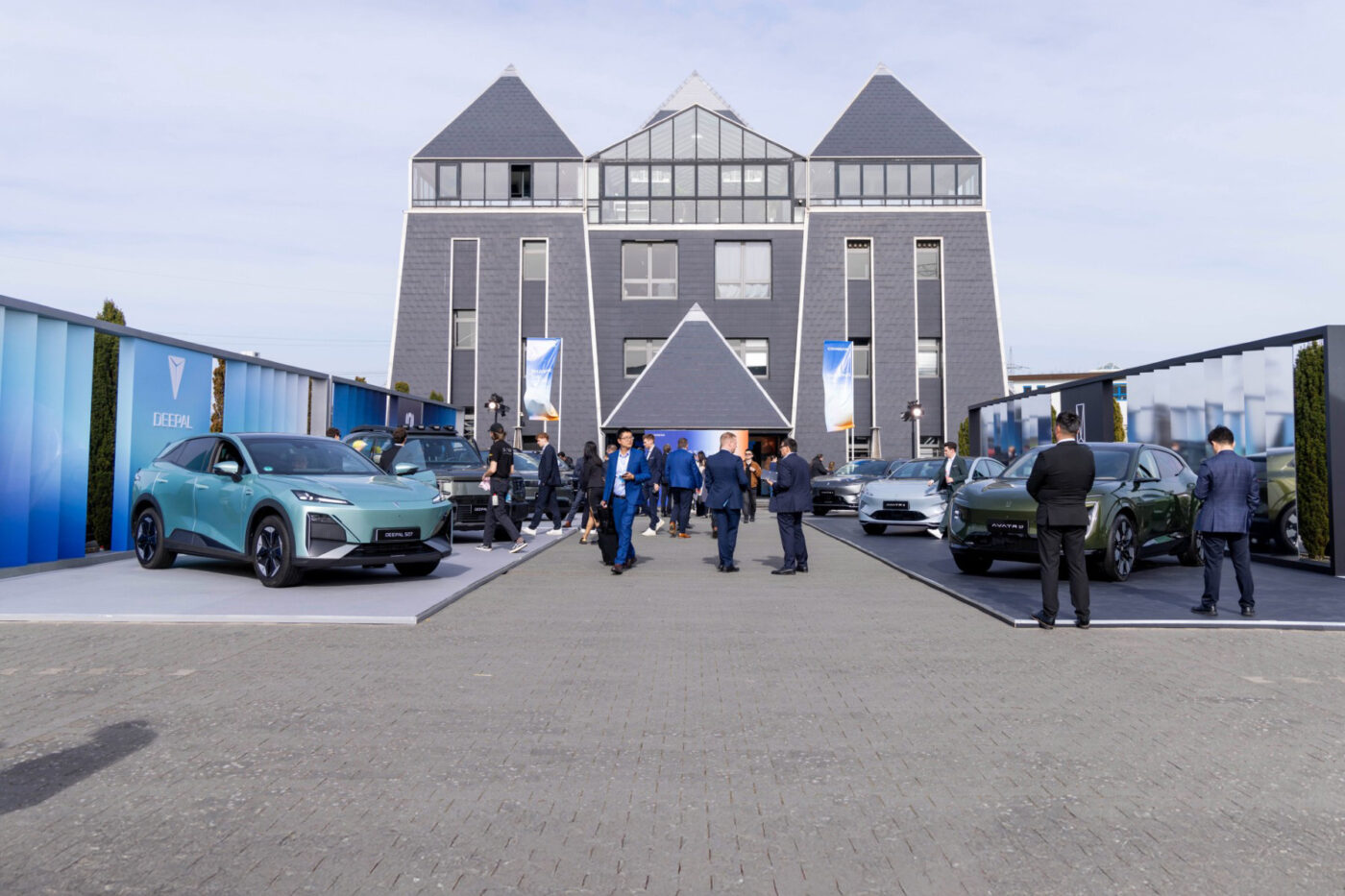
A momentous European debut: Changan promises eight electric models by 2027
Changan is around 40 years old, China’s fourth largest carmaker – and now on a European mission: in Mainz, Germany, the group showcased an impressive range of vehicles for partners, dealers and media representatives. From compact SUVs to full-size crossover sedans – all-electric or partially electrified. In addition, Changan guided visitors through a technology exhibition, demonstrating its expertise in the fields of PHEVs, range extenders and fuel cells. Above all, the OEM is aware of the complexity of the task: “We don’t want to rush into anything; we want to be well prepared. We have seen what happens to other brands that are not ready,” Nic Thomas, Changan’s marketing and sales director for Europe, told us. He did not specify who he meant, but from BYD’s false start with Hedin as an importer to short-lived phenomena like Aiways, there is plenty of choice.
Changan wants to compete with a classic sales organisation and with three brands – the core brand of the same name, Deepal and Avatr. The first target markets are Norway, Denmark, Germany, the UK, and the Netherlands. Although the Chinese want to start selling their cars in Europe starting in Q2, they won’t hit the road in Germany until September at the earliest. Sales manager Thomas explained that he is currently putting together a network of retail partners in Germany. As soon as he has ten retail partners “covering the regions in Germany that are important to us, we’ll get started.” At the same time, Changan is setting up a European spare parts warehouse in the Netherlands. “Thorough preparation,” Thomas emphasised. Behind the scenes, Changan has apparently been working on its expansion into Europe for a year and a half.
Changan to start local production “before 2030”
There was no shortage of prominent figures on the day of the European premiere. Thomas’s most senior boss, Changan Chairman Zhu Huarong, had come to Mainz and appeared modest on stage during his speech. The top manager said that the company had learned from Europe over the past few decades. He sees the drive system transformation as an opportunity for his company to gain a foothold here – with a strategy called “In Europe for Europe,” including local production plans that should become a reality “before 2030.” Until then, vehicles for Europe will come from Changan’s plant in Nanjing. With its own R&D and design centres, the company has had a global presence for some time, for example in Italy and Germany. And last year, in preparation for the current kick-off, the company already set up a European headquarters in Munich.
To showcase their trustworthiness, the managers in Mainz played videos of several testimonials that emphasised the quality of the partnership with Changan, including Webasto, Ford and Infineon. Bosch and Schaeffler were also mentioned as suppliers. However, the company does not want to rely on joint venture partnerships for its expansion. In the early 2000s, Changan was one of the companies that allied with established manufacturers such as Ford and Mazda. These joint ventures are still in place today, but they are not a model for the European launch, Thomas explained. Changan wants to manage this independently.
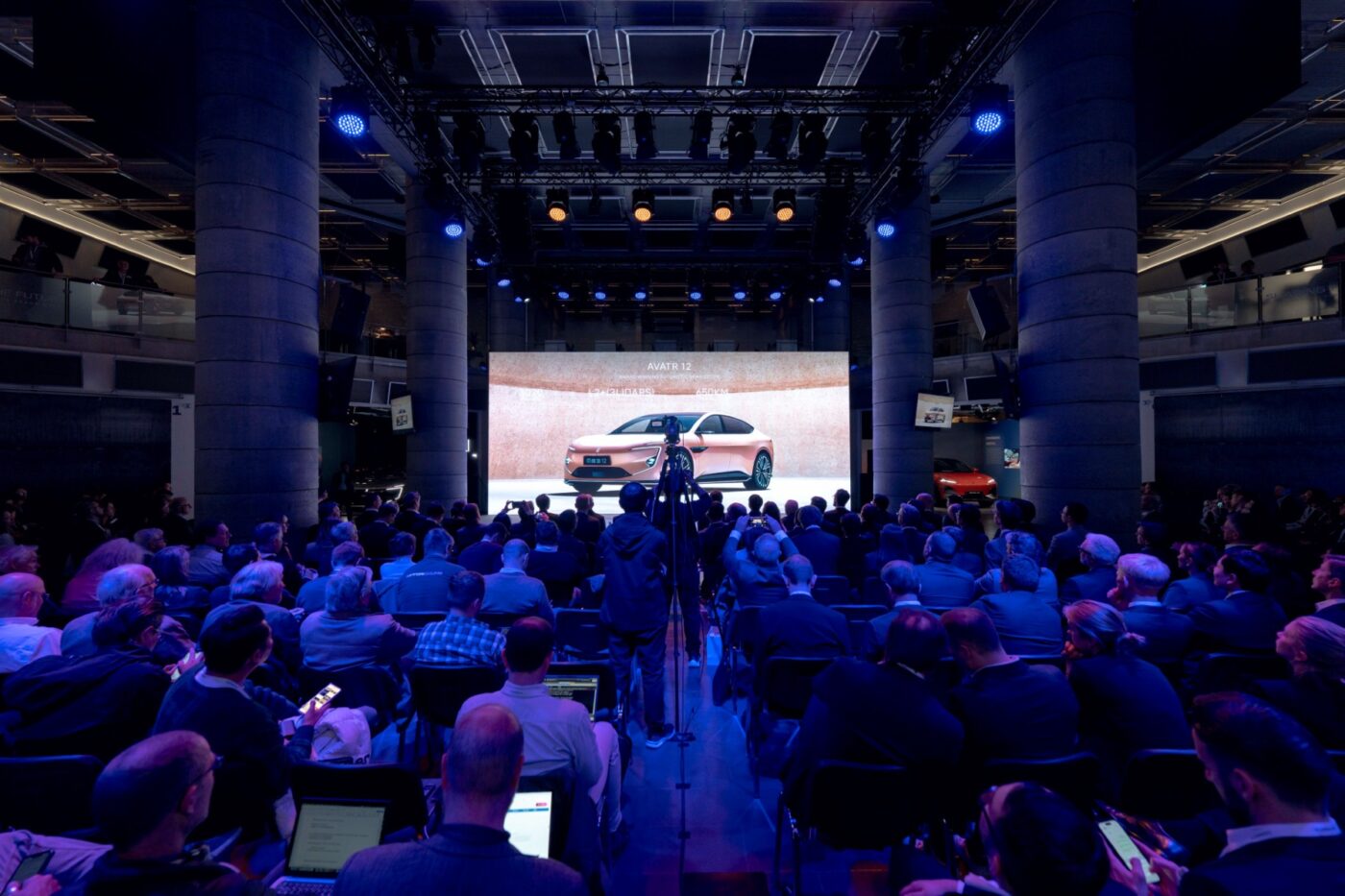
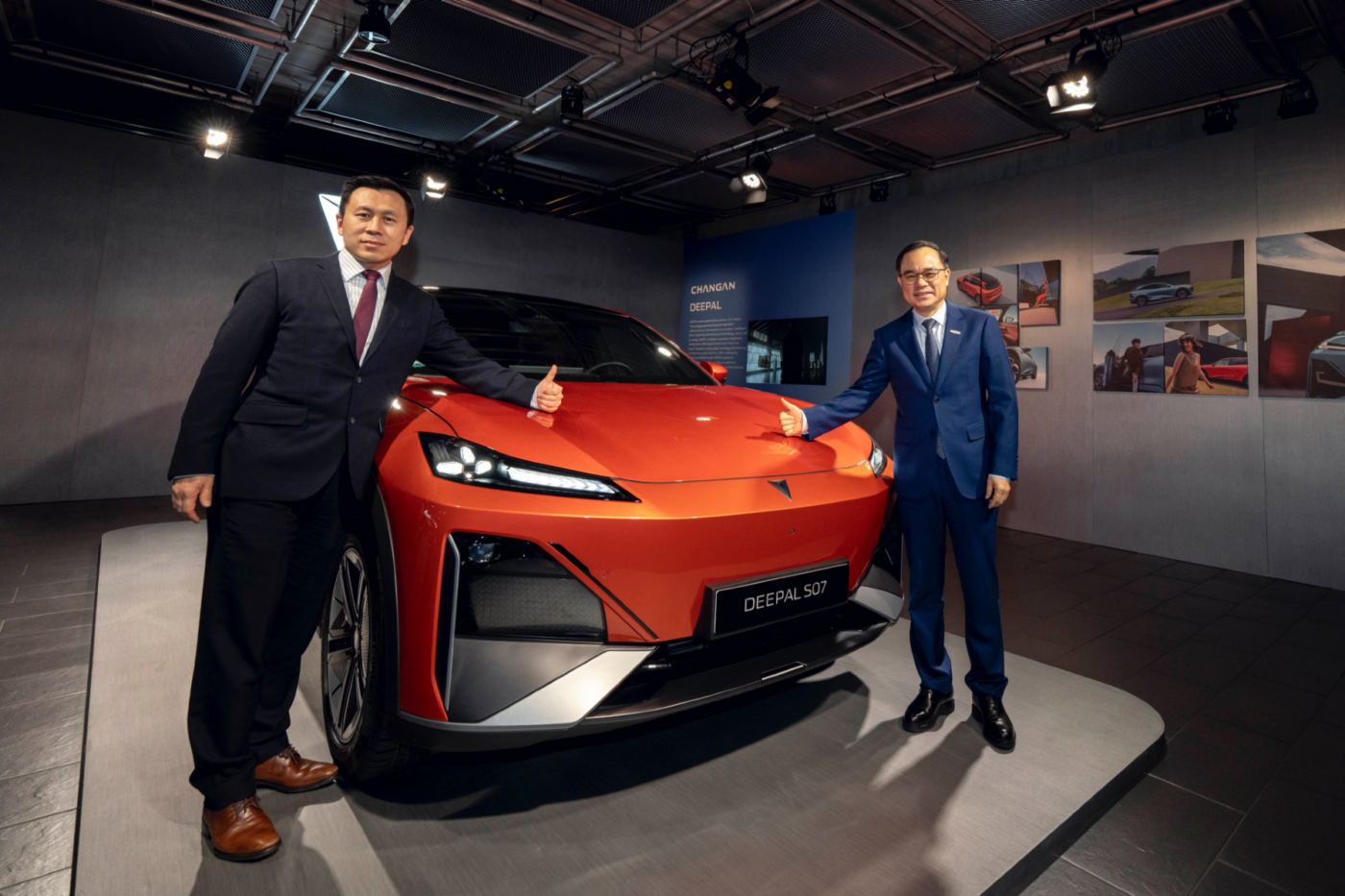
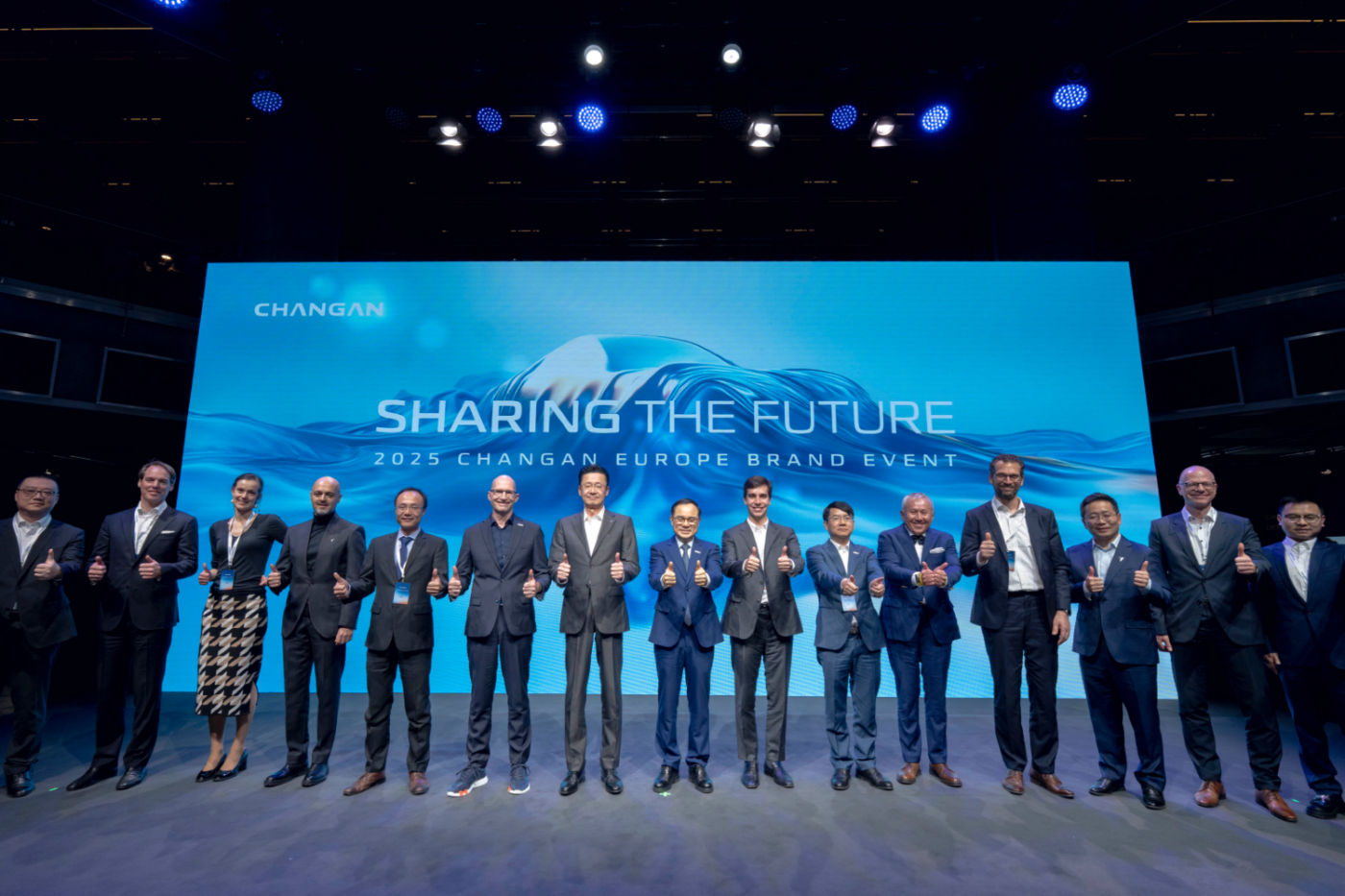
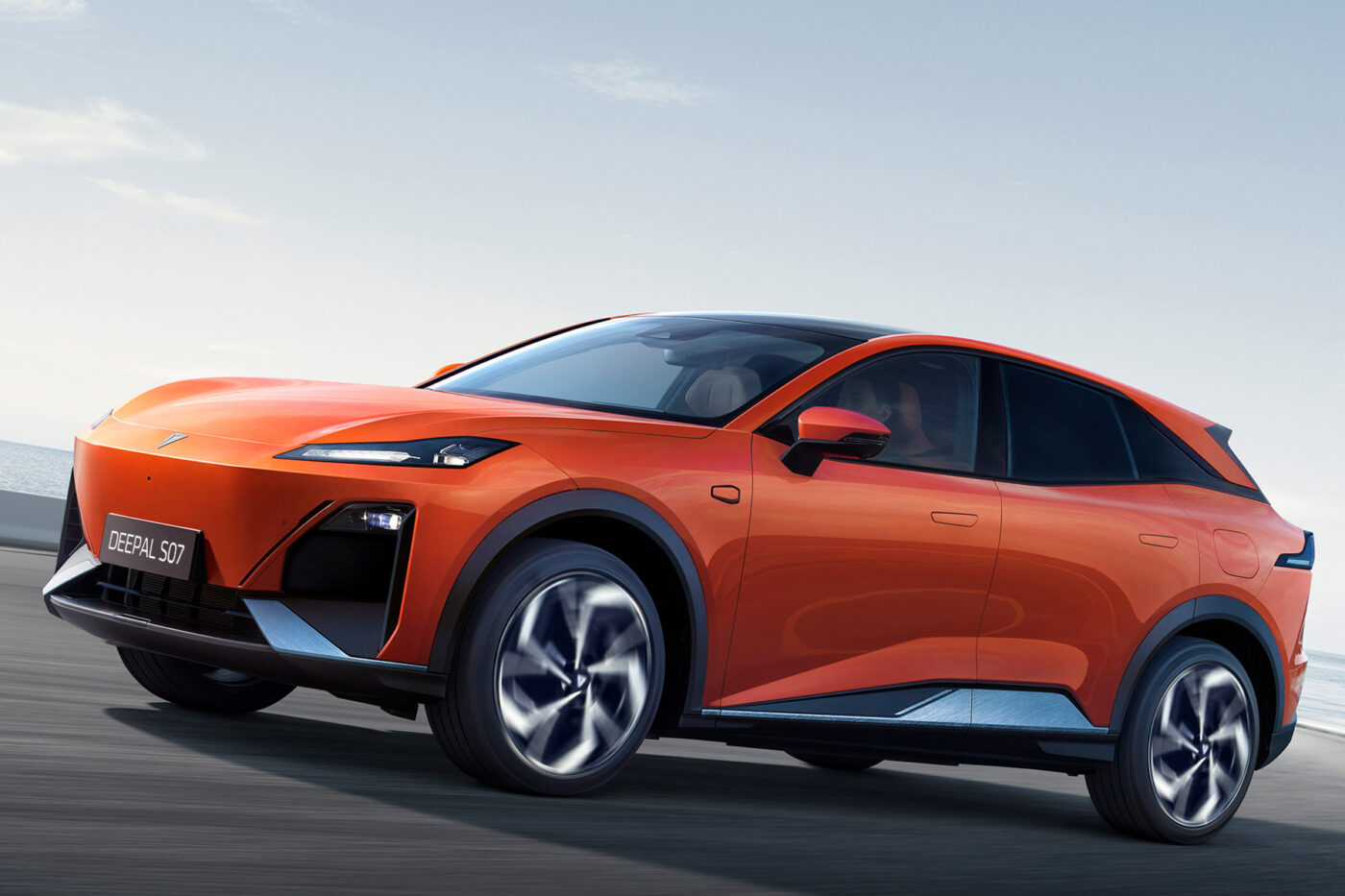
The first step will be to launch eight models by 2027. The first two models to pave the way are the Deepal S07 and the Deepal S05 – an all-electric mid-size SUV and a slightly smaller compact SUV that will be introduced as a BEV and also as a range extender model. Changan has yet to name the other models – three each in 2026 and 2027. However, they are likely to include the larger Changan E07 and the premium electric vehicles Avatr 11 and Avatr 12, as the manufacturer is naming these series as the European vanguard of their respective brands Changan and Avatr. There is also talk of a mix of BEV, PHEV and EREV drives.
Like many of its Chinese competitors, Changan also sees itself as a pioneer in the field of intelligent and connected electric vehicles. The state-owned OEM, headquartered in Chongqing, wants to score points with a special software-driven architecture that is based on “a central and zonal E/E architecture.” This system is already set to demonstrate its strengths in the Deepal S07, for example in the form of intelligent voice and gesture control or – less obviously – in a battery safety system.
Decent range, weak DC charging performance
Which brings us to the S07’s bodywork. Before the launch event in Mainz, the technical data for the electric SUV was still incomplete, although the first highlights had already been revealed, including the price and range – 45,000 euros and 475 km according to WLTP. Now, further details about the drive followed. The Deepal electric car has an electric motor with an output of up to 160 kW and up to 320 Nm of torque on board. It should enable the electric SUV to reach speeds of up to 180 kph and accelerate to 100 kph in 7.9 seconds. The NMC battery with cells from supplier CALB has an energy content of 80 kWh and is said to ensure the stated range of 475 km. However, the battery can only be charged with 93 kW DC, which means that the standard charging process is likely to take 45 minutes or more, which is no longer up to date. Officially, Changan states 35 minutes for the charging window from 30 to 80 per cent, which is rather difficult to compare.
The battery’s specifications look familiar: the Mazda6e also has an optional 80 kWh battery on board and only charges at around 95 kW DC. Since the EV is built by Changan-Mazda and is thus based on the Chinese company’s technology, it stands to reason that both vehicles use the same battery. Especially since their launch dates are close together: the Mazda electric car was first presented at Auto China in Beijing in April 2024. It has been available on the local market as the EZ-6 for several months now, in three BEV and four EREV versions. It is due to be launched in Europe in the summer of 2025.
But back to the Deepal S07: the SUV measures 4.75 x 1.93 x 1.63 metres (wheelbase: 2.90 metres) and thus competes in the mid-size class, where things can get a bit cramped for us: as is well known, bestsellers like the Tesla Model Y and the Skoda Enyaq compete in this segment. In terms of price, Changan is positioning the S07 similarly to the aforementioned duo. All of them start at around €45,000. The Chinese company wants to stand out primarily in terms of design and equipment. With its ‘shark nose design,’ angular air intakes and hinted rear spoiler, the S07 is going for a dynamic look. In addition, the frameless doors and retractable door handles, among other things, are elegant features.
Almost everything is factory-fitted
When it comes to equipment, Changan likes to keep things simple: everything comes standard except for the optional tow bar or larger wheels. Otherwise, the only choices are the interior and exterior colours. It makes the Deepal debutant a relatively well-equipped contender with standard features such as a panoramic roof, a central 15.6-inch touchscreen, an augmented reality head-up display or a 360-degree camera, plus all kinds of driving assistants as well as dual-zone climate control or electronically adjustable seats. Apple CarPlay and Android Auto are also supported. Users have between 570 and 1,510 litres of boot space, a large frunk with 125 litres and various storage compartments in the interior. The towing capacity is 1.5 tonnes.
Unsurprisingly, Leevon Tian, Changan’s Deputy Managing Director for Europe, emphasised the aesthetics and intelligent technologies of the S07. The Deepal brand is intended to stand for driving pleasure and modern mobility, and to “inspire young people and those young at heart.” With the core brand Changan, on the other hand, the manufacturer is targeting families, while Avatr, as a premium brand, is intended to be priced higher than the other two offshoots. The first data presented by the Chinese on the Changan E07, Avatr 11 and Avatr 12 already on display in Mainz also indicates a different technical standard compared to the Deepal S07. The Changan E07, for example, is said to feature 800-volt architecture, a range of 520 km and more DC charging power (“260 km in 15 minutes”) – not to mention the fact that the very long electric vehicle with a visually striking rear end in a closed pickup style. The Avatr electric vehicles are supposed to perform even better, but so far the only information available is the already-known figure of 730 km according to the Chinese test cycle. However, Avatr is likely to come out of hiding soon. In any case, the message for this year’s IAA Mobility in Munich is: “Avatr will be there!”

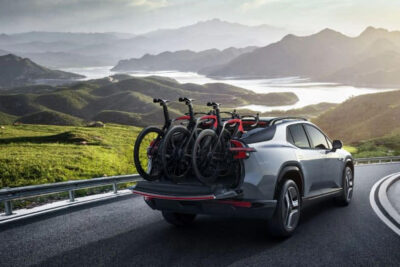
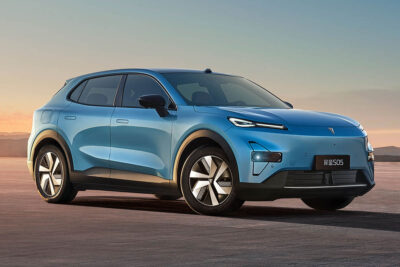
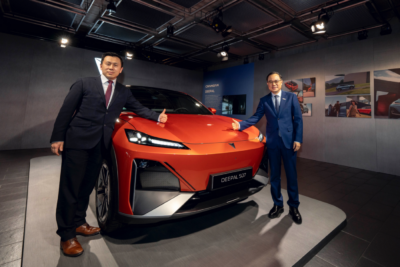
0 Comments